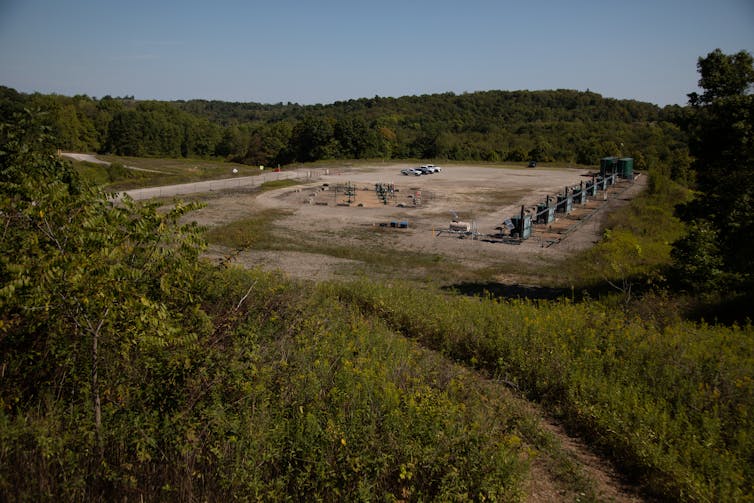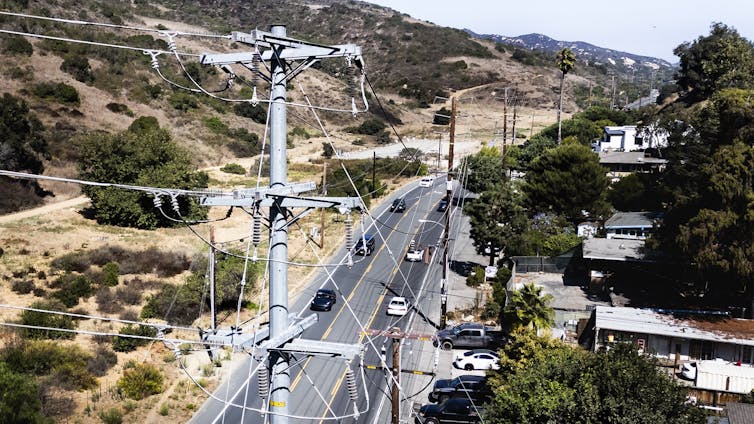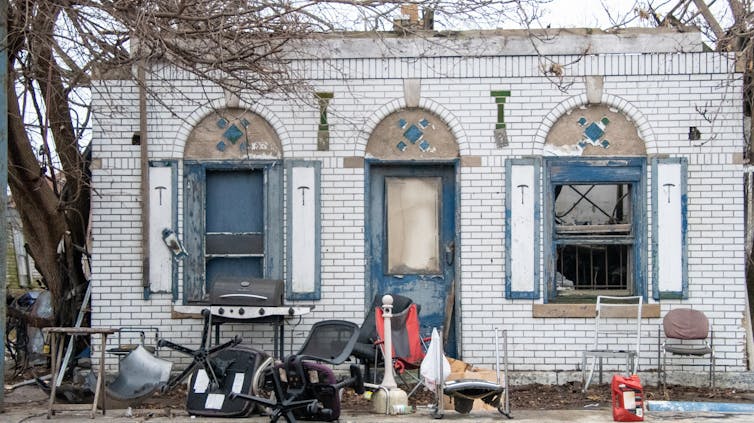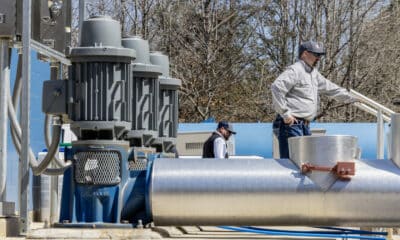
AP Photo/Matthew Brown
President Donald Trump’s declaration of a “national energy emergency” on his first day in office – and which he reiterated during his address to Congress on March 4, 2025 – might have seemed to echo other national emergencies, like those presidents declared in the wake of the Sept. 11, 2001, terrorist attacks and to deal with the COVID-19 pandemic in 2020.
But there has never before been a national energy emergency. During the energy crises of the 1970s, President Jimmy Carter declared local or regional energy emergencies in a handful of states. These actions suspended some environmental regulations, such as air-pollution limits for coal-fired power plants, for very short periods to make sure those states’ residents had enough electricity.
When a president declares a national emergency, he claims significant powers under the National Emergencies Act, which allow him to take steps to solve the emergency. In this situation, Trump might seek to override environmental regulations, order utility companies to buy power from particular power plants, or invoke the Defense Production Act to secure materials needed for power plant construction.

Rebecca Droke/AFP via Getty Images
Six weeks into his presidency, Trump had not taken any action to address this emergency, though during his speech to Congress he said he wants to increase drilling and build a new natural gas pipeline in Alaska. And Trump’s discussion of energy policy has not directly referred to the consumer price hikes expected as a result of the 10% tariffs he imposed on Canadian oil, gas and electricity starting on March 4, 2025.
Critics of the president’s declaration have described it as a “giveaway” to the fossil fuel industry in the form of looser regulations and measures to make it easier to drill for oil on government-owned land. In fact, the executive order’s definition of “energy” excludes energy generated from wind and solar, as well as efforts to conserve energy – all of which were major parts of the Biden administration’s energy strategy.
As someone who has studied energy markets for decades, I have seen several events that might qualify as energy-related emergencies, such as meltdowns at nuclear power plants around the world, shortages of electricity and natural gas, and massive power blackouts.
But over the past 15 years, the United States has become a global energy superpower even without any emergency declarations. The advent of hydraulic fracturing unleashed a wave of oil and gas production, even as U.S. energy demand barely budged. In a time of such energy abundance, there is no clear emergency on the scale of the energy crises of the 1970s. But there are some causes for concern.
Big increases in domestic production
One goal Trump’s declaration sets out is to increase what the executive order calls the nation’s “energy security.” Usually that phrase refers to an ability to operate using energy produced within the U.S. rather than overseas – particularly from countries that have long-standing conflicts or disagreements with the United States.
Based on raw numbers, however, the U.S. is already quite energy secure. In 2023, the nation produced nearly 13 million barrels of oil per day, which is more than any country has ever produced in the history of the oil business. Since 2015, when a federal ban on oil exports was lifted, the U.S. has been increasing the amount of oil it exports every year. And for the past several years, the U.S. has been the world’s leading exporter of gasoline, sending 10% of its total annual production to other countries.
Since the start of the shale-fracking boom in the mid-2000s, U.S. production of natural gas has also been increasing. The country’s natural gas exports have also risen over the past 10 years, though they have been limited by the number of ports that can handle liquefied natural gas cargo.
Still a net importer of oil
The U.S. produces plenty of oil to meet its demands, but not the kinds of oil that American refineries are designed to process into useful fuels.
Therefore, despite the increases in domestic production, the U.S. is still a net importer of crude oil. In 2023, the U.S. imported almost twice as much oil as it exported.
And U.S. refineries’ output of gasoline and heating oil depends on imported oil. Most oil refineries in the U.S. are quite old and were engineered to process so-called “heavy” crude oil produced in countries such as Canada, which is historically the United States’ biggest source of imported oil.
Most of the recent increase in U.S. oil production comes from hydraulic fracturing of shale and is so-called “light” crude oil. Refining light crude would require new refineries or a major reengineering of existing refineries, with new equipment, expanded capacity or both.
Making those changes would be very expensive. So refinery owners are hesitant to make these kinds of investments because there is a risk that the investments won’t pay off. Because U.S. refineries produce so much gasoline and have limited capacity, the U.S. also continues to import some refined petroleum fuels such as jet fuel.

Washington Post via Getty Images
A fragile power grid
Concern over the nation’s aging electric power grid is another focus of Trump’s energy emergency declaration. Experts have been issuing warnings for years. A 2024 study on the national transmission grid commissioned by the U.S. Department of Energy has concluded the U.S. needs to double the size of the grid in the next couple of decades.
For the first time in nearly half a century, the U.S. is facing the prospect of rapidly increasing electricity demand. The demand for power has always gone up and down a bit with population and the health of the economy, but this time is different. Growth in electricity demand is now driven by the construction of massive data centers and by electrification of cars and heating and cooling systems. The Department of Energy reports that data center electricity use in particular has tripled in the past 10 years and could easily double in the next few years. At that rate, data centers could account for over 10% of all electricity demand in the country before 2030.
The U.S. supply of power generation in many regions is not ready for this surge in demand. Many power plants – particularly the older ones and those that burn coal – have shut down in the past several years, driven by a combination of economic pressures and environmental regulations. Building new power plants in many parts of the U.S. has become bogged down in regulatory red tape, public opposition and economic uncertainty. The North American Electric Reliability Corp., which develops standards for grid reliability, has placed over half of U.S. states at some level of risk for not having enough power generation to meet anticipated future demand.

Paul Bersebach/MediaNews Group/Orange County Register via Getty Images
Will declaring an emergency help?
Under Trump’s energy emergency declaration, the administration seems likely to take actions that will make it easier to drill for more oil and gas. And the federal government may also make it easier to build power plants that run on coal, natural gas and possibly nuclear fuel.
But expanded fracking, in and of itself, will probably not address any energy security issues in the U.S., unless there are major investments in refineries to handle the increased oil production. Reducing the barriers to building power plants addresses a much more pressing problem, but the country would still need to expand the transmission grid itself, which does not get as much attention in the president’s declaration.
Time will tell whether the energy emergency declaration will be used to solve real problems in the nation’s energy supplies, or whether it will be used to further bolster oil and gas producers that have already made the U.S. a global energy powerhouse.![]()
Seth Blumsack, Professor of Energy and Environmental Economics and International Affairs, Penn State
This article is republished from The Conversation under a Creative Commons license. Read the original article.
















































